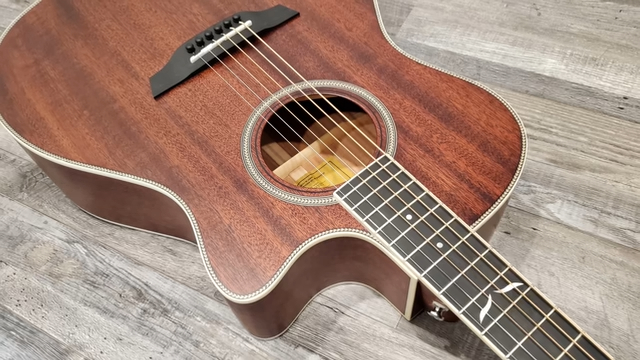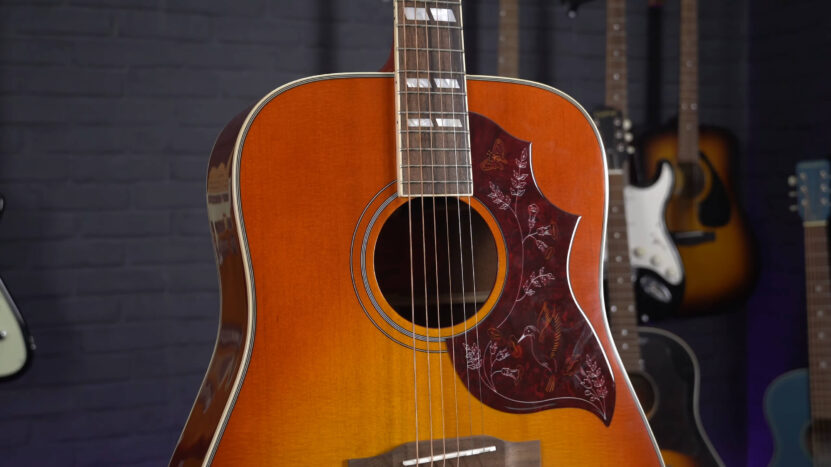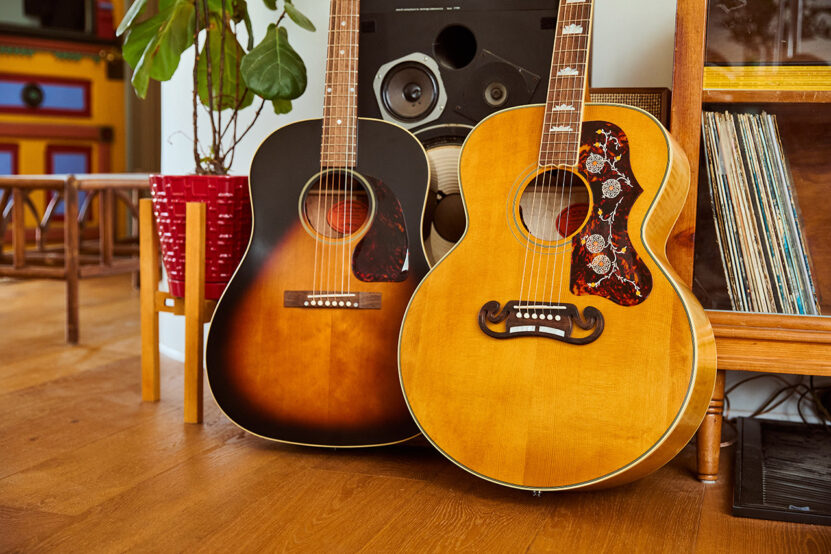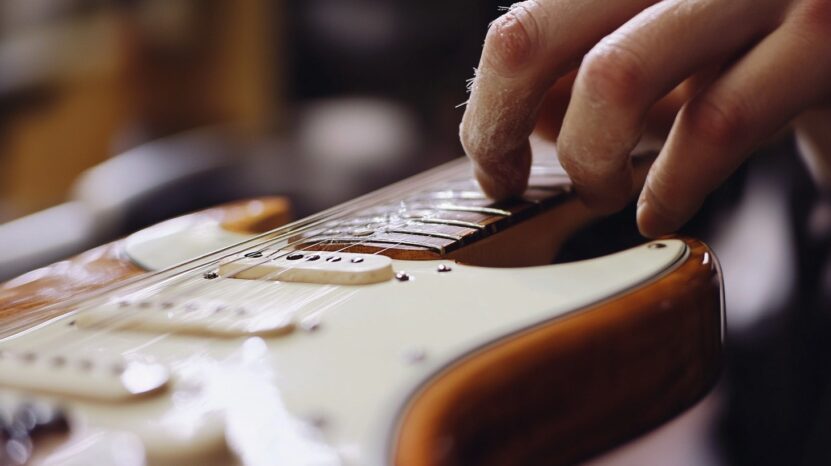
Share Post:
Keeping your guitar fretboard clean is essential for maintaining the instrument’s playability and extending its longevity.
Regular maintenance helps avoid the buildup of sweat, oils, and grime, which can lead to deterioration over time.
Neglecting the fretboard can result in damage to the wood and impact the overall performance of your guitar.
Let us talk about it in greater detail.
Preparation Before Cleaning
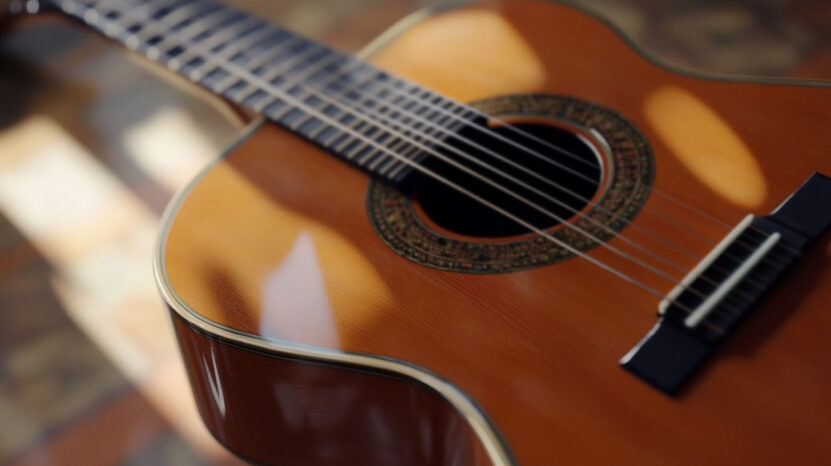
Proper preparation is essential before you start cleaning your guitar’s fretboard. Here’s a detailed step-by-step guide on how to do that properly:
Step 1: Wash Your Hands
The first and simplest step is to wash your hands thoroughly. Your hands naturally produce oils that can transfer to the fretboard, adding more grime while you’re trying to clean it.
Clean hands ensure that you aren’t adding new contaminants during the cleaning process.
- Tip: Use soap and warm water, and dry your hands completely before handling your guitar.
Step 2: Remove the Guitar Strings
Once your hands are clean, carefully remove the guitar strings. It gives you full access to the fretboard, allowing for a more thorough cleaning.
Removing the strings also prevents any trapped dirt or oils beneath the strings from being redeposited onto the fretboard.
- Tip: If the strings are old or worn, this is the perfect opportunity to replace them with new ones once you’ve finished cleaning the fretboard.
Step 3: Gather Your Cleaning Materials
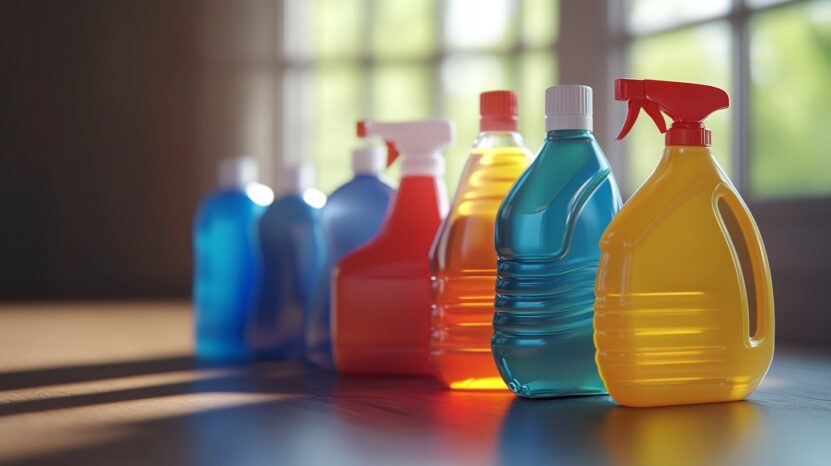
Before you begin cleaning, gather all the necessary materials. The tools and products you need depend on the type of fretboard your guitar has.
For Rosewood, Ebony, and Pau Ferro fretboards, you’ll need:
- Fine 0000 steel wool to gently remove built-up grime.
- Lemon oil or a fretboard conditioner to hydrate and protect the wood.
- A soft cloth, preferably microfiber, for applying and removing cleaning products.Masking tape to cover the pickups if you plan to use steel wool. This prevents metal particles from sticking to the pickup magnets.
Step 4: Cover Sensitive Areas (If Needed)
If you’re using steel wool to clean your fretboard, it’s important to cover sensitive areas like the guitar’s pickups.
Metal particles from the steel wool can cling to the magnets in the pickups, which can be difficult to remove later.
Use masking tape to cover the pickups and protect them during the cleaning process.
Step 5: Adjust Your Cleaning Approach for Different Fretboards
Not all fretboards require the same cleaning techniques.
If you’re working with a Rosewood, Ebony, or Pau Ferro fretboard, fine steel wool and lemon oil will help clean and condition the wood.
For Maple fretboards, especially lacquered ones, you’ll need to be more careful.
Cleaning Different Types of Fretboards
Now let us talk about the processes of cleaning different fretboards:
Rosewood, Ebony, and Pau Ferro Fretboards
Rosewood, Ebony, and Pau Ferro fretboards are known for their open-pored nature, which allows for the absorption of oils and conditioners.
To clean these types of fretboards, begin by using fine 0000 steel wool to remove dirt and grime buildup between the frets.
It’s important to work gently and in the direction of the wood grain to avoid scratching the surface.
Once the fretboard is clean of surface dirt, apply a small amount of lemon oil or a designated fretboard conditioner.
Massage it into the wood using a soft cloth, ensuring it penetrates deep into the pores.
The step is essential to hydrate the wood, keeping it from drying out and cracking.
However, avoid over-oiling, as excessive amounts can seep under the frets and inlays, causing them to loosen over time.
Maple Fretboards
Maple fretboards require a slightly different approach. If your maple fretboard is unfinished, you can use fine steel wool sparingly to remove stubborn grime.
However, if the maple fretboard is lacquered, avoid using steel wool altogether.
Lacquered surfaces can be damaged by abrasive materials and cleaning products.
For lacquered maple fretboards, it’s best to use a slightly damp microfiber cloth to wipe down the surface.
Avoid using lemon oil or fretboard conditioners on lacquered maple, as these can damage the finish.
Maple fretboards are less porous than Rosewood and Ebony, so they don’t require as much conditioning but still benefit from regular cleaning to remove sweat and oils.
Polishing the Frets
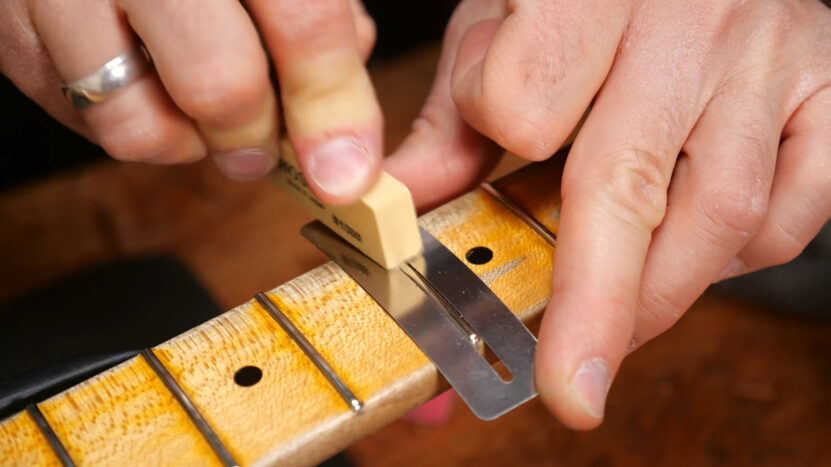
Polishing the frets is an often overlooked aspect of guitar maintenance, but it can significantly improve playability.
Tarnished frets can cause strings to drag, affecting your ability to play smoothly. To polish your frets, use 0000 steel wool or a non-abrasive polishing pad like Scotch Brite or a nail buffing block.
These tools can remove oxidation and restore the shine without damaging the frets themselves.
Always mask the fretboard with painter’s tape or masking tape before polishing the frets to avoid accidental scratches or damage.
Gently work each fret individually, ensuring you cover the entire surface of the metal. After polishing, use a clean, soft cloth to remove any remaining particles.
If you prefer a more delicate approach, non-abrasive polishing pads can be just as effective.
These pads are designed to polish without removing any metal, making them a safer choice for those who are concerned about over-polishing their frets.
Whichever method you choose, regular fret polishing will improve the feel of the guitar and extend the life of your strings.
Avoiding Common Cleaning Mistakes
Cleaning a guitar fretboard is a delicate process, and there are several common mistakes to avoid.
One of the most important is steering clear of household cleaners. Products that contain ammonia, bleach, or alcohol can strip the wood of its natural oils and cause long-term damage.
Stick to products that are specifically designed for guitars or fretboards to ensure you’re not accidentally harming the instrument.
Over-oiling is another mistake that many guitarists make. While conditioning the wood is important, applying too much oil can cause the wood to become overly saturated.
It can lead to the loosening of frets and inlays, which affects the guitar’s playability.
A little oil goes a long way, so use it sparingly and only when the fretboard looks or feels dry.
When using steel wool, be cautious and ensure it is only used on unfinished or unvarnished woods.
Avoid using it on lacquered or painted surfaces, as it can scratch and dull the finish. Always cover sensitive areas, such as the pickups, to prevent metal particles from getting stuck to magnets.
Post-Cleaning Maintenance
After cleaning your guitar’s fretboard, implementing post-cleaning maintenance habits can help keep it in great condition.
Wiping Down the Fretboard
After cleaning your guitar’s fretboard, one of the most effective and simple maintenance habits you can develop is wiping it down after each playing session. Using a clean, dry microfiber cloth to gently wipe the fretboard will remove the sweat, oils, and dirt that accumulate during playing.
A daily habit prevents the buildup of grime, which can lead to more difficult cleaning tasks down the line and reduce the need for deep cleaning sessions. Regularly wiping the fretboard also helps maintain its appearance and playability, ensuring the wood stays in optimal condition.
Proper Storage for the Guitar
How you store your guitar plays a significant role in maintaining the fretboard’s health. Always keep your guitar in a case or on a stand when not in use, preferably in a dry, dust-free environment. Dust can accumulate on the fretboard and in between frets, leading to grime buildup over time.
More importantly, avoid exposing your guitar to high humidity or sudden temperature changes, as these environmental factors can cause the fretboard wood to warp or crack. Storing your guitar in a controlled environment protects not only the fretboard but the entire instrument from unnecessary wear.
Managing Humidity Levels
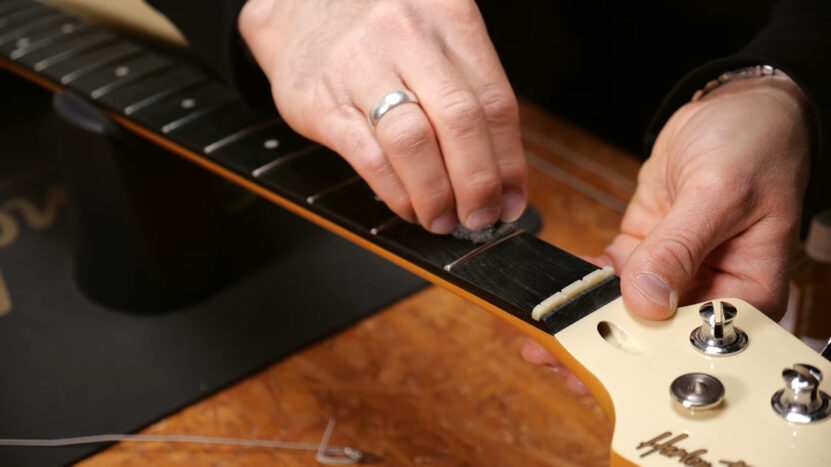
Humidity is one of the most overlooked factors in maintaining a guitar, yet it can significantly impact the fretboard. If the wood is exposed to high levels of moisture, it can expand, warp, or even crack over time.
Extremely dry conditions can cause the fretboard to shrink or develop cracks. Using a guitar humidifier or storing your instrument in a room with balanced humidity can prevent damage. Ideally, the humidity level should be between 40% and 50% to maintain the wood’s integrity.
Regular String Changes
Another important aspect of post-cleaning maintenance is regular string changes. Strings not only collect sweat, dirt, and oils as you play but also transfer these contaminants to the fretboard. Over time, this can lead to grime buildup that affects both the strings and the wood.
For optimal results, wipe down the strings after each use and consider changing them based on your playing frequency.
The Bottom Line
Maintaining your guitar’s fretboard through regular cleaning and conditioning is essential for preserving its playability and longevity.
By following the proper cleaning techniques for your specific fretboard type, you can prevent damage and ensure that your instrument remains in top condition.
With just a little attention and care, your guitar will continue to produce beautiful music for years to come.
Related Posts:
- How to Adjust Your Acoustic Guitar’s Truss Rod - A…
- G Major Chord Variations - Learn 5 Ways to Add Depth…
- Is the Epiphone Inspired by Gibson Hummingbird Worth…
- How to Connect a Guitar Hero Guitar to Xbox One -…
- 7 Essential Guitar Chord Shapes Every Beginner Should Know
- Step-by-Step Instructions for Setting Up Guitar Pedalboards






